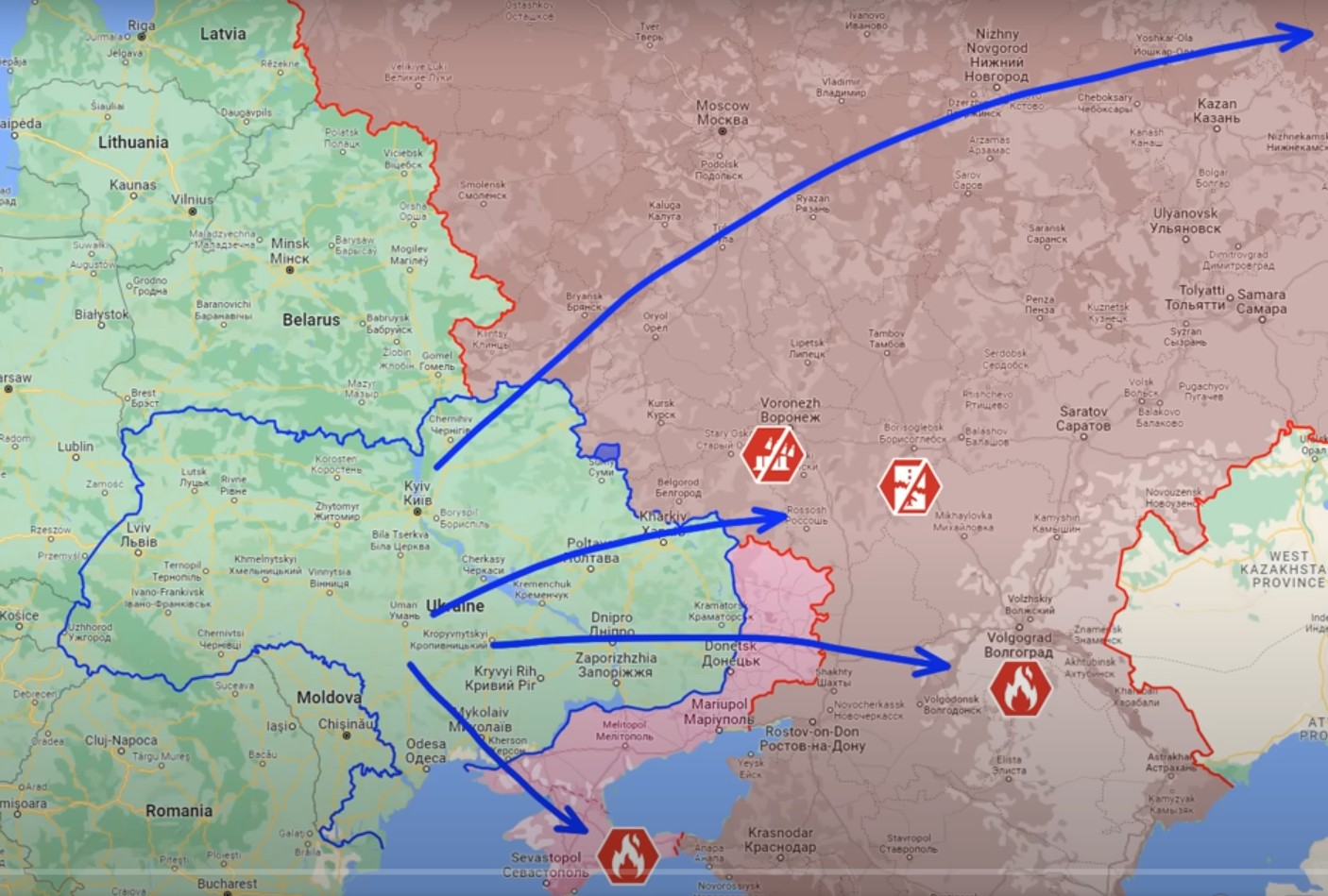
In a bold series of attacks, Ukrainian forces have launched precision strikes against critical Russian military infrastructure, spanning from occupied Crimea to the Ural Mountains. These strikes, utilizing drones and missiles, have targeted key assets including ammunition depots, fuel storage facilities, and command posts, potentially disrupting Russian military operations.
Crimean Peninsula Under Fire
The strategic port of Feodosia in occupied Crimea was hit by Ukrainian drones, damaging a crucial transshipment hub. This attack on the port's oil depot infrastructure is likely to complicate Russian oil logistics in the region, forcing a greater reliance on rail and road transportation.
Deep Strikes into Russian Territory
Ukrainian Special Forces have successfully penetrated deep into Russian territory, hitting fuel depots in Voronezh and the Perm region. Eyewitness accounts and video footage show jet-powered missile drones evading Russian defenses, resulting in extensive fires at these facilities.
The Borisoglebsk airfield in Voronezh Oblast was another target, with reports of explosions and fires near guided air bomb warehouses and Su-35 aircraft storage areas. Satellite data confirmed multiple fire spots in the vicinity.
Crippling Russia's Air Defense
In a significant blow to Russian air defense capabilities, Ukrainian forces destroyed a 96L6 radar west of Belgorod, part of an S-400 air defense system. Additionally, an ATACMS missile strike took out a Nebo-M radar station, severely limiting Russia's ability to detect and intercept aerial threats within a 600 km range.
Ammunition and Command Post Strikes
The Kotluban military arsenal in Volgograd Oblast, used for storing and upgrading rocket artillery, was successfully targeted despite robust Russian defenses. The attack triggered massive fires and ammunition explosions.
Ukrainian forces also struck three key Russian command posts, including those of the 35th and 27th separate motorized rifle brigades and the Second Russian Combined Arms Army, using Storm Shadow missiles and GMLRS rockets.
Implications and Future Outlook
These coordinated strikes represent a significant escalation in Ukraine's offensive strategy, targeting not only ammunition depots but a wide range of critical military infrastructure. As winter approaches, making large-scale ground operations more challenging, Ukraine appears to be maximizing the use of its newly developed missile drones to inflict substantial damage on Russian military capabilities.
The success of these operations may have far-reaching consequences for the ongoing conflict, potentially shifting the balance of power and forcing Russia to reassess its strategic positioning.